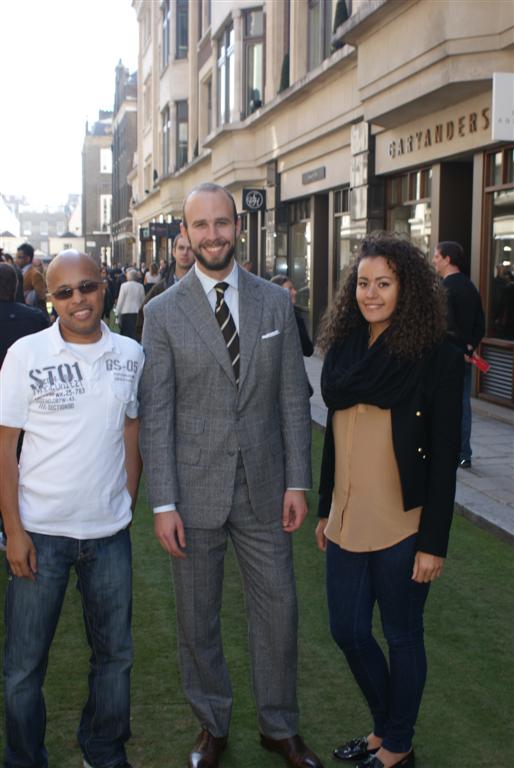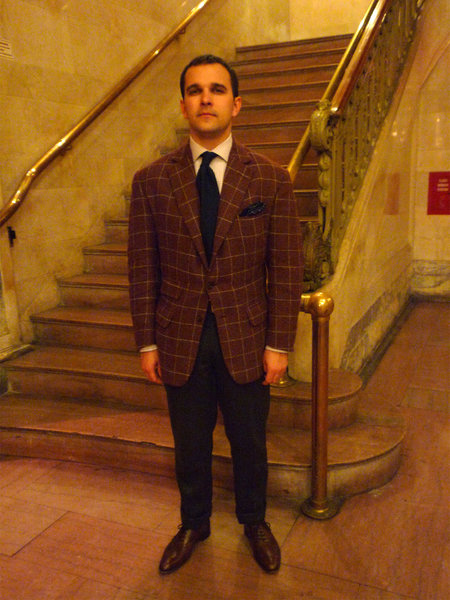- Joined
- Apr 10, 2011
- Messages
- 27,320
- Reaction score
- 69,987
That swinging issue happens on a lot of A&S coats. They also often have sleeve pitch issues. When I commissioned a coat, I experienced the same sleeve pitch issue, but not the swinging issue. If I had to guess, I assume it's something in their blocks, which they switched to in the 90s when they had to train John to be a head cutter. Why the current cutters don't fix these issues at the fitting, however, I don't know.
All swingers, as mentioned here:
 www.styleforum.net
www.styleforum.net



Hm, I'm not sure that's true. I think what you're saying is whether the collar stays on your neck when you move? I assume that's just as achievable in ready-to-wear, as it is in bespoke, assuming you have a figure that works for that pattern. This is assuming we ignore all the bespoke disasters. But theoretically, if we compare the Platonic ideals of bespoke and ready-to-wear, I'm not sure why RTW won't stay glued to your neck when you move.
There's a funny video of Roger Stone explaining the benefits of bespoke. He also says the coat moves with you when you move. And in the video, as he's saying this, he moves and the coat lifts off his neck. I found is amusing.
All swingers, as mentioned here:
Steed vs Anderson & Sheppard
I have decided to take the plunge. In a couple of months I will engage with a master tailor for my first bespoke. After reviewing countless reviews and SF, reading my collection of books on tailoring, and West Coast location, I have come down to Anderson and Sheppard and Steed. Although I...
Both: good bespoke moves with you in a way that RTW couldn't. This was something I read on the forum a while back when researching whether to go bespoke and finally understood when I received my first commission. I also think it is clear we have to take into account if the house style fits your body type and if the cutter can skillfully apply it to you.
I think this is where the marriage of tailor/house style with your own body type is important. It should both look good and feel good.
Hm, I'm not sure that's true. I think what you're saying is whether the collar stays on your neck when you move? I assume that's just as achievable in ready-to-wear, as it is in bespoke, assuming you have a figure that works for that pattern. This is assuming we ignore all the bespoke disasters. But theoretically, if we compare the Platonic ideals of bespoke and ready-to-wear, I'm not sure why RTW won't stay glued to your neck when you move.
There's a funny video of Roger Stone explaining the benefits of bespoke. He also says the coat moves with you when you move. And in the video, as he's saying this, he moves and the coat lifts off his neck. I found is amusing.











